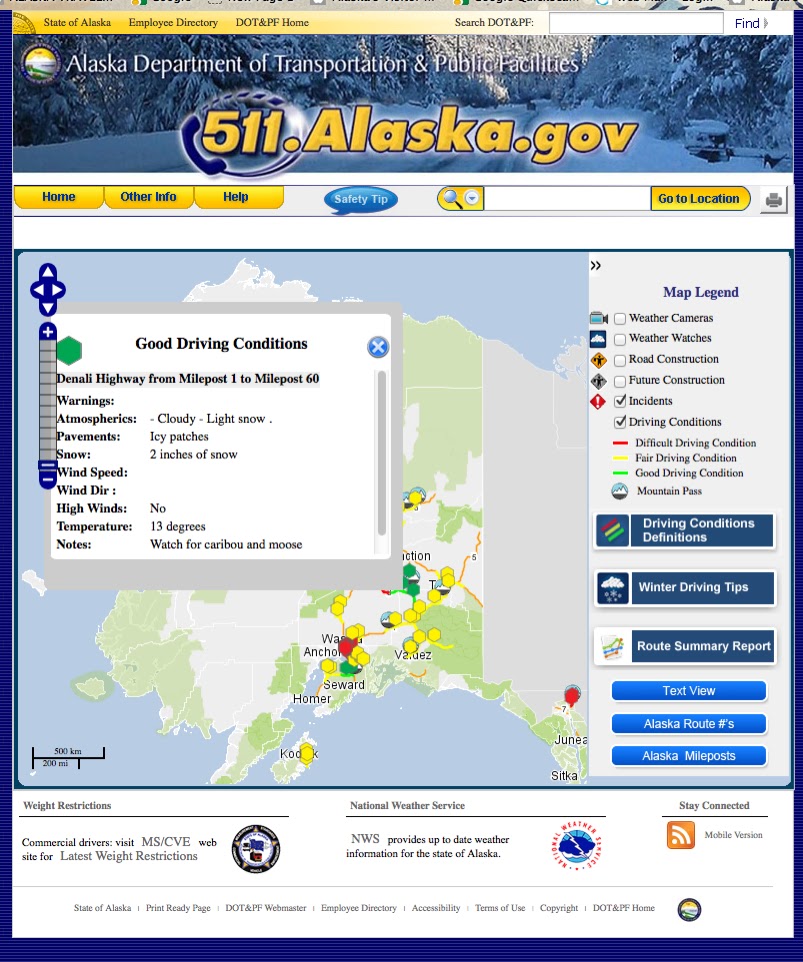Tok Cutoff Fire: Fire Is 9 Miles Southwest of Tok, Near Mile 118 Of The Cutoff
Seven Mile Lookout Fire response ramps up; Evacuation orders remain in Tok BY ALASKA DIVISION OF FORESTRY & FIRE PROTECTION on J...
Seven Mile Lookout Fire response ramps up; Evacuation orders remain in Tok
Evacuation orders are in effect for areas east of Tok due to fire activity from the Seven Mile Lookout Fire (#222), which is burning approximately three miles west of Mile 118 on the Tok cut off, about nine miles southwest of Tok.
Residents at Butch Kuth Ave, Osprey, Moose Nugget, Goshawk Rd are under GO (Level 3) evacuation orders due to the Seven Mile Fire (#222) burning half a mile west. If you’re in this zone, leave immediately. Fire crews and Alaska State Troopers are working to keep these roads clear to ensure public safety.
Evacuation preparedness is essential for residents living off Butch Kuth Ave and Jack Wade Rd. These neighborhoods are under SET (Level 2) status. Pack essential items, secure pets and important documents, and be prepared to evacuate quickly if conditions change.
Several neighborhoods off of Mukluk in Tok are in READY (Level 1) status. While there is no immediate threat, this is the time to create or review your evacuation plan, pack a “go bag”, and stay tuned to local alerts and updates
The Seven Mile Lookout Fire (#222) has grown to 1,500 acres and continues to burn roughly 9 miles southeast of Tok Cutoff and remains the top priority for firefighters in the area. Evacuation notices are still in effect for residents along the Glenn Highway for Butch Kuth Ave, Moose Nugget Rd, Goshawk Rd, and Osprey. These roads are also closed due to the fire. Fire managers urge the public to stay alert and be ready to act if conditions change.
The Tok Fire Department has supplied the fire with essential personnel and two engines to help the Alaska State troopers with evacuations. Firefighters are also working tirelessly to set up structure protection around properties in the area, including clearing brush, installing sprinkler systems, and creating defensible space to reduce fire risk.
Helicopters and fixed wing aircraft have begun conducting water drops over active parts of the fire to slow the spread and reduce heat along the perimeter. These aerial efforts are helping ground crews gain the upper hand by cooling hotspots and improving conditions for constructing defensible line. Dozers are also being mobilized to assist clearing wide paths through dense vegetation, allowing firefighters to move more quickly and help in creating a defensive line.
White Mountain Type 2 Initial Attack Crew is working alongside eight smokejumpers off of the Eagle trail to prepare the line for defensive measures. Clearing vegetation and installing hoselay as part of the fire’s defensive efforts. These preparations are intended to help slow the fire’s progress. Sunday’s work will focus on strengthening these sections and improving access, with more resources ordered to assist.
The Tok River Fire (#289) was reported by a helicopter burning in spruce and mixed hardwood approximately 1.2 miles east of Mile 115 on the Glenn Highway. Helicopters were able to deliver water drops on the fire. Tok Forestry crews will be sent to the fire today. There are no structures threatened at this time.
Four other wildfires are active to the northwest of Tok, burning approximately 18 miles north of the Alaska Highway, to the east of the Taylor highway and roughly 37 miles from Tok. These fires are located in limited suppression areas, where they are being monitored.
















